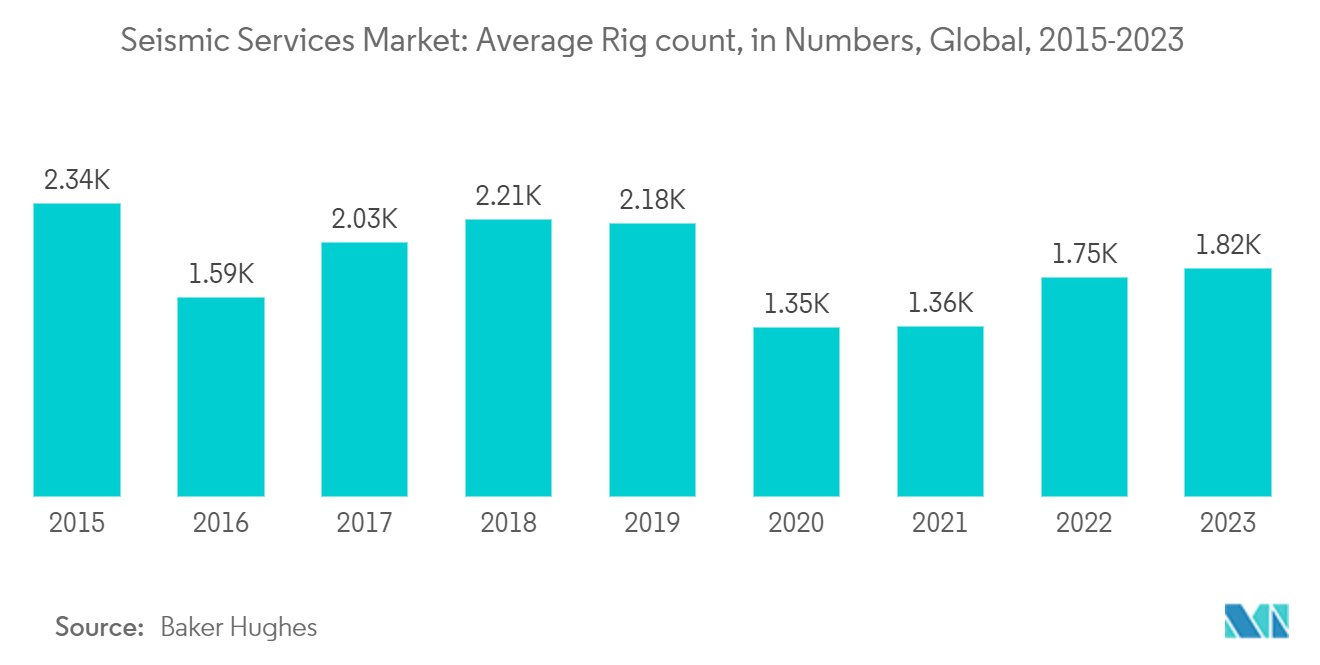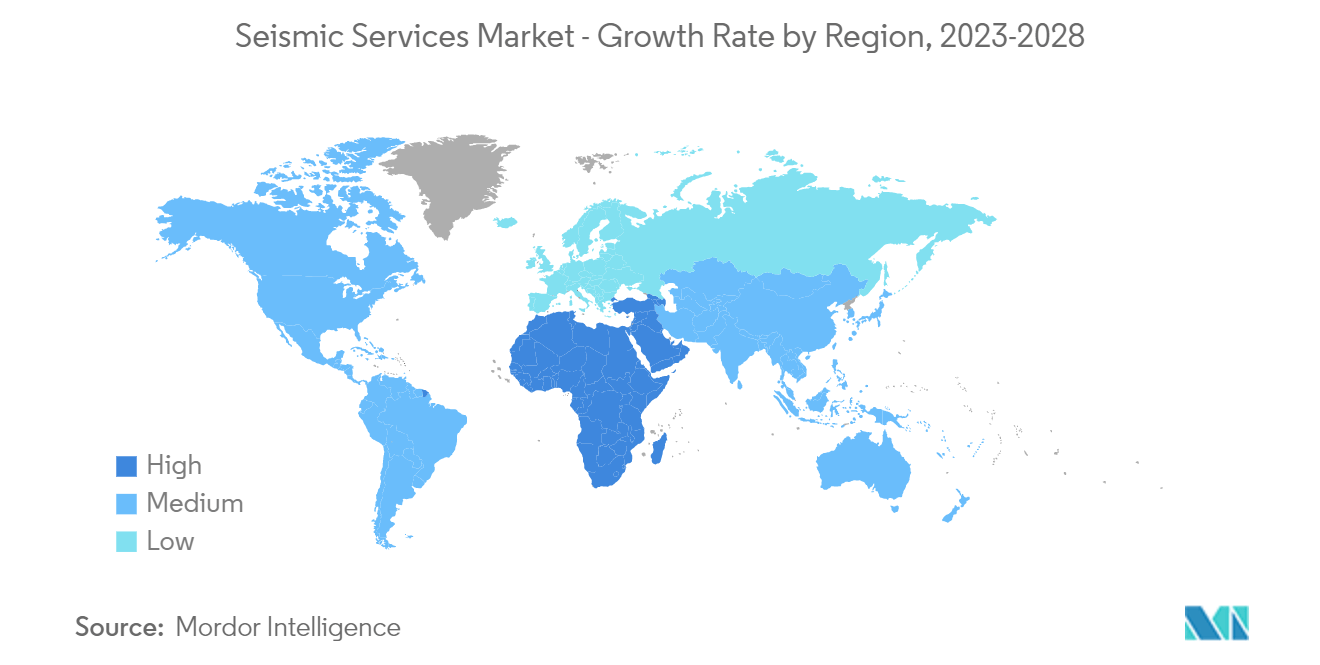Market Trends of Seismic Services Industry
Increasing Demand from the Offshore Oil and Gas Industry
- The offshore segment accounts for the largest share of the seismic services market. Offshore seismic data usually has much higher quality than onshore due to several favorable conditions, including repeatable and consistent sources, good conditions for coupling at sources and receivers, and the uniform property of water as the medium.
- According to Baker Hughes, the total world average rig count was 1,824 in 2022, more significant than the world average of 1,747 in 2022. With the increasing number of rigs, exploration activities will grow, which, in turn, is expected to drive the seismic services demand in the world.
- In January 2022, Shell PLC announced the discovery of a substantial offshore oil and gas well in Namibia. Early analysis of the exploratory drilling estimates that the newly discovered well could contain 250 to 300 million barrels of oil and gas. After this discovery, the reservoir development work necessary for commercial petroleum production will likely drive the market.
- Furthermore, the Norwegian Petroleum Directorate has estimated that around 47% of all the remaining resources on the shelf must be discovered. Around 350 undeveloped discoveries in the United Kingdom Continental Shelf (UKCS) contain 3.2 billion barrels of oil equivalent (bboe).
- Therefore, increasing exploration and production (E&P) activities in the deepwater and ultra-deepwater reserves and increasing efforts by the oil and gas majors to tap into the undiscovered resources are expected to drive the offshore seismic services market.

Middle-East and Africa is Likely to Experience Significant Growth
- The Offshore Seismic Survey is the least expensive method of mapping oil and gas deposits. This approach locates subsurface structures and records data on refraction and reflection. Because the survey requires more than one source, several WGs are employed to collect data.
- Middle-East and Africa is witnessing increasing offshore exploration in regions such as offshore West Africa, which has widespread untapped resources, creating opportunities for the oil and gas exploration companies. Thus, explorations in this region are likely to drive the seismic services market.
- In January 2022, Shell PLC made a significant oil and gas discovery in the Graff-1 well in offshore Namibia, which can spark a wave of investment in Namibia. The drilling results have shown one layer of at least 60 meters deep of hydrocarbons, holding an estimated 250 to 300 million barrels of oil and gas equivalent. The field expects to go into production by 2026 after its development, including seismic surveys, which are expected to drive the market.
- Furthermore, in January 2022, the Australian geoscience company Searcher started its seismic survey off the West Coast of South Africa for a multi-client survey program that covers a number of petroleum license blocks. The permit area is approximately 297,087 m2, and the permit provides for the undertaking of a two-dimensional and three-dimensional speculative seismic survey program. This is likely to aid the growth of the market in the region.
- Therefore, the above-mentioned factors, such as new oil and gas discoveries and approvals for seismic testing, are expected to drive the seismic services market in the Middle-East and Africa region over the forecast period.



